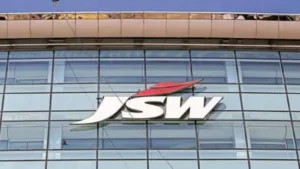The U.S. Steel takeover battle signifies more than an ignominious demise for the world’s first billion-dollar company. It also has to do with the fate of the planet.
Andrew Carnegie’s vast industrial interests produced the beams, bars, and planks that make America’s railroads, skyscrapers, and military machinery that helped win World War II. But the technology of steel making that marked the beginning of the 20th century collides head-on with the challenge of preventing catastrophic climate change in the 21st century.
A simple recipe was used in Carnegie’s blast furnace. To produce one tonne of steel, they took about 1.4 tonnes of iron ore from the rich deposits of Lake Superior and 800 kilograms (1,763 pounds) of coal from the high-carbon Appalachian mines and put them in an aerated smelter. melted. Blow the mixture in a blast furnace to produce a strong, ductile metal.
However, there are other recipes that use electric arc furnaces or EAFs. To make the same ton of iron, you need 600 kg of iron ore, 150 kg of coal and 700 kg of metal scrap, which are melted with electricity. Greenhouse gas emissions are much lower, around 0.4 tonnes of carbon dioxide compared to 2.3 tonnes in a blast furnace. For much of the 20th century, EAF was relatively niche. But as the steel produced by American industrialization accumulated, the piles of cheap scrap grew, allowing it to outperform Carnegie blast furnace steel. EAF-based steelmaker Nucor, whose sales in the early 1990s were about one-third that of U.S. Steel, is now growing with much higher profitability. is doubling. Nucor is currently valued at $41 billion. U.S. Steel was valued at less than $5 billion on the eve of a takeover bid by former mining giant Cleveland Cliffs earlier this month. This transition is now imminent across industries worldwide. Clean energy think tank Global Energy Monitor said in a report last month that while blast furnaces still account for the majority of global steel production, their share of projected steel production capacity has fallen sharply. said. Blast furnace share has fallen from 67% in March 2022 (about the same as the industry as a whole today) to 57% last year. This is the first clear indication that the entire industry will need to transition to electricity if steel production, which is responsible for about 7 percent of global emissions, is to start reducing its carbon footprint. .
Part of this transformation will be driven by decarbonisation. Swedish company H2GS AB hopes to start green steel production in 2025 using carbon-free hydrogen to produce iron for smelting in electric furnaces, and in recent months the Rio Tinto Group and Signed a metal supply contract with Vale SA.
China Baowu Steel Group, the world’s largest steelmaker, plans to achieve its carbon footprint this year and reduce it by 30% by 2025. China’s second and fourth largest steel mills, Antetsu Group and HBIS Group, have set carbon ceiling targets for 2024 and 2022, respectively. ArcelorMittal SA, the second largest in the world, plans to reduce its European plant footprint by 30% by 2030 compared to he 2018 levels.
The fact that steelmakers are willing to take these promises indicates that the forces that facilitated the demise of U.S. Steel are being felt around the world. Blast furnaces have dominated China’s steel production because there was not enough scrap metal in the world to meet the insatiable demand for new metals. As of 2020 alone, China is producing more steel than the United States has in the last 30 years. The huge pile of junk created by this boom will soon be available. Cars, ships and buildings built more than a decade ago are now being smashed, destroyed, iron released and recycled into electric furnaces. The government planning agency aims to increase China’s iron scrap consumption from 260 million tons in 2020 to 320 million tons in 2025, with the aim of replacing nearly one-tenth of imported iron ore with domestic metals. there is If scrap yards could be mobilized to produce the rusty metal needed for electric furnaces, China’s demand for new steel would soon drop, and the emissions associated with its production would drop.
The global steel industry is clearly not fast enough to reach its broader goal of reducing its carbon footprint to zero by 2050. Given the 30-year lifetime of blast furnaces, the steel industry’s share of projected production is likely to be closer to zero than the reported 57 percent. According to Global Energy Monitor. Yet it was long believed that the world had no alternative to a dirty old blast furnace. The 2020 value is lower than it was when Andrew Carnegie and JP Morgan put it together in 1901, and US Steel’s experience suggests this path is far from inevitable.





